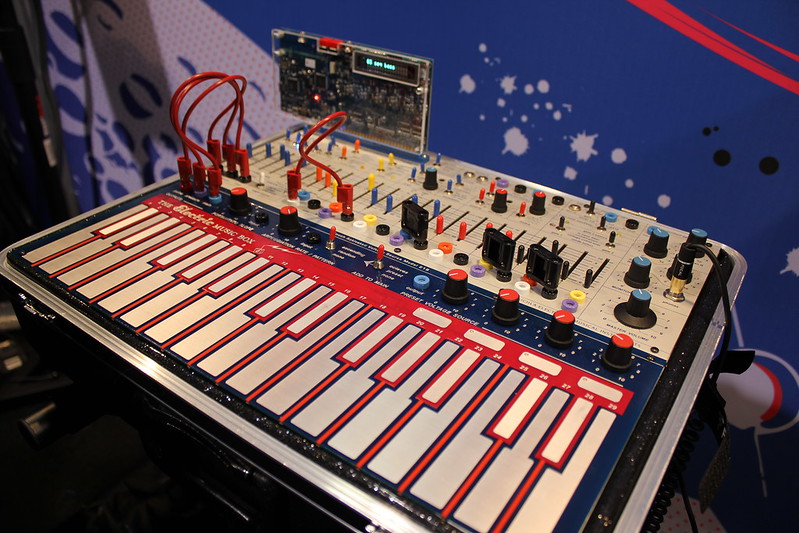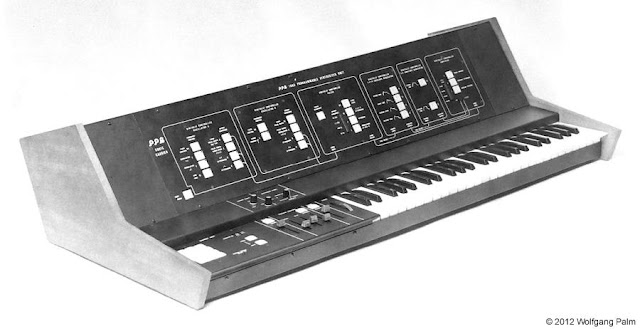via this auction
 "Perfect working condition. The latest and best version 2.02
"Perfect working condition. The latest and best version 2.02 From the Jomox website:
From the Jomox website:'Jomox introduces their first major analog real-time synthesizer. It's a true analog with 8 voices housed in a classic looking desktop-style case with wood end-cheeks, 40 knobs, 42 buttons and 85 LED's! It's also rack-mountable if you prefer.
The SunSyn features 2 analog oscillators (VCO's) per voice. The waveforms include sawtooth, square and pulse with pulsewidth-modulation. But in addition to these are the new Ramp Controlled Oscillators (RCO's). The RCOs follow the VCO characteristics like modulation, sync, tuning and frequency alterations. The RCO's use digital sounds which come from 4 wavesets, each with 256 waveforms each. In effect, these digital sounds get an analog treatment for nicer, warmer and fatter tones.
There are 4 RCO's per voice and wavesets can be added via PCMCIA-card.
The filter section is also a true analog design but with very modern features. It is a 4-pole filter but fully configurable with independent high pass and low pass features available. Create filters that range from the sounds of a Minimoog, to the squelchy 303. Filter settings can be stored in one of two scene memories and real-time Morphing between scenes can be accomplished.
As for modulation, JoMoX has devised a clever Routing System for the SunSyn, turning it into an 8-voice modular! It is used to virtually patch between various modules or parameters. There are up to 4 Routing Elements per voice with 4,096 possible combinations per Routing Element. Modulation paths are configured using the front panel display screens. This modular approach to signal routing is a feature usually found only on the huge, expensive classic Modular synths by ARP, E-mu, Moog and Buchla. Unlike those, however, the SunSyn features complete patch memory (350 patches and 150 multi-patches) and multitimbral MIDI implementation. Most parameters can be controlled by MIDI, and controller/editor templates for most sequencers will be, or already are available. As for output, there are stereo outs, 8 freely routable individual outs and a stereo input to run external audio through the Routing system.'"






















































